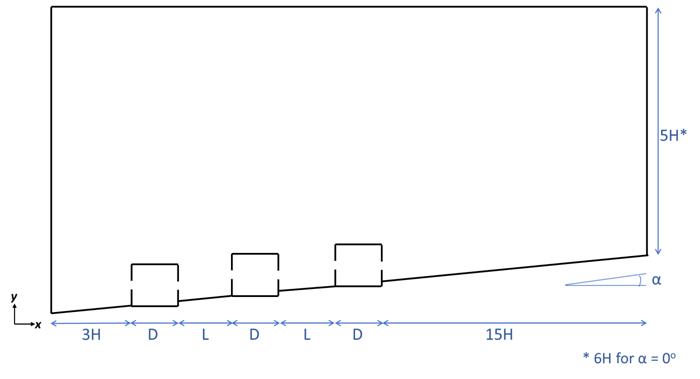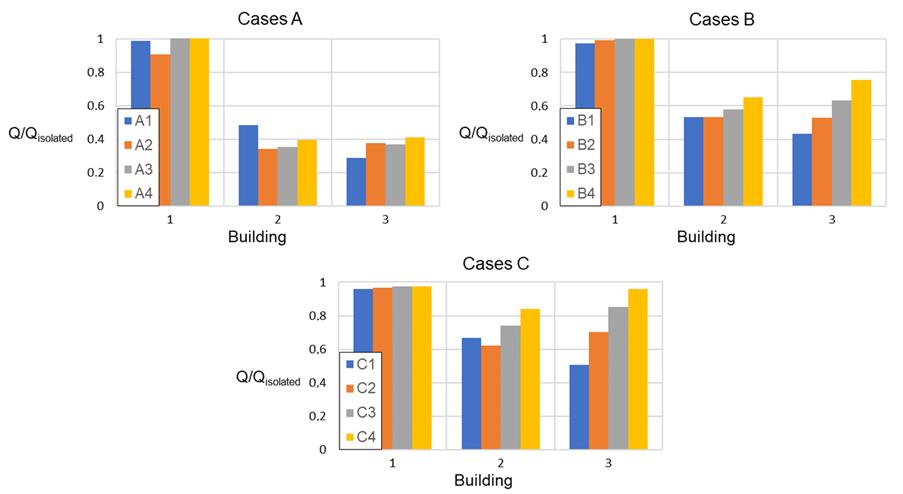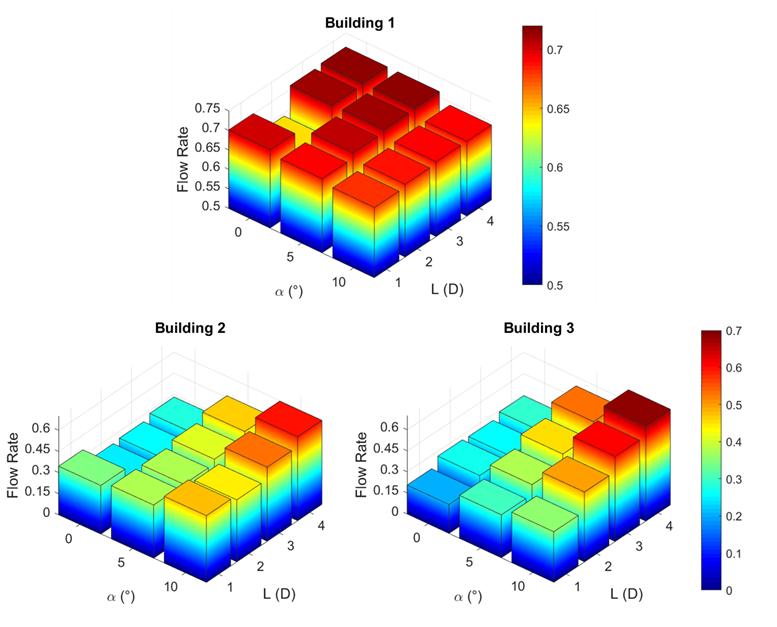Abstract
Natural ventilation is the main passive strategy for thermal comfort inside buildings and renewal of the air, making it healthier. In recent decades, Computational Fluid Dynamics has proven to be an efficient tool for estimating natural ventilation. The objective of this work was to study the ventilation from the action of the wind inside models of low-rise buildings to observe how geometric conditions influence the topology of the flow and volume flow ratesusing the open source software OpenFOAM. In order to verify and validate the software, a 3D building model with openings on opposite faces was used. Subsequently, arrays of three buildings were studied albeit considering the problem as two-dimensional. In the arrangements, three different terrain slopes and four distance values between buildings were tested. The results show that ventilation in the second and third buildings was gradually recovered with an increase in separation and terrain slope, although the values obtained in the first building were not reached.
Keywords:
Wind-driven ventilation; CFD; OpenFOAM; Numerical simulation; Low-rise buildings

 Thumbnail
Thumbnail
 Thumbnail
Thumbnail
 Thumbnail
Thumbnail
 Thumbnail
Thumbnail
 Thumbnail
Thumbnail
 Thumbnail
Thumbnail
 Thumbnail
Thumbnail
 Thumbnail
Thumbnail
 Thumbnail
Thumbnail
 Thumbnail
Thumbnail
 Thumbnail
Thumbnail
 Thumbnail
Thumbnail
 Thumbnail
Thumbnail
 Thumbnail
Thumbnail
 Thumbnail
Thumbnail
 Thumbnail
Thumbnail















